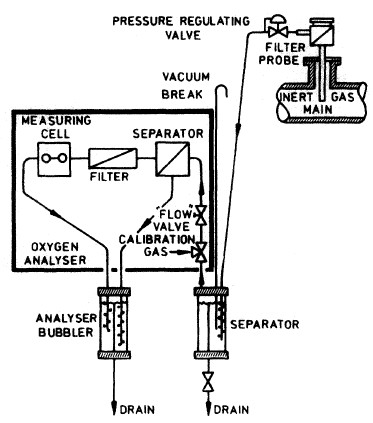
Oxygen Analyser for Measuring Oxygen Levels in Enclosed Spaces
The measuring of oxygen content in an atmosphere is important,
particularly when entering enclosed spaces. Also inert gas systems use
exhaust gases which must be monitored to ensure that their oxygen
content is below 5%. One type of instrument used to measure oxygen
content utilises the fact that oxygen is attracted by a magnetic field, that
is, it is paramagnetic.


